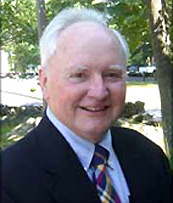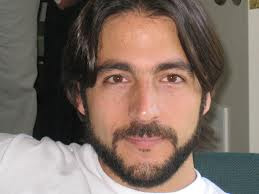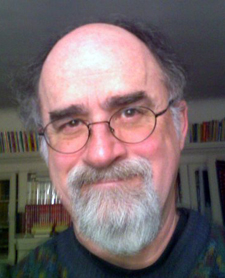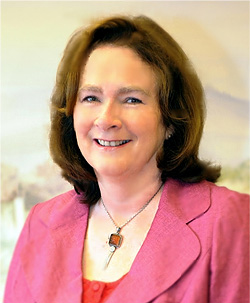A Touch of BODHICITTA
Printed in the Summer 2013 issue of Quest magazine.
Citation: Todd, Larry "A Touch of BODHICITTA" Quest 101. 3 (Summer 2013): pg. 110-113.
By Larry Todd
With career and home responsibilities, social obligations, and a host of other details, it's easy to become disconnected from the unseen realms of existence we Theosophists like to contemplate. Becoming too engrossed in mundane activities (no matter how virtuous our intention) can inadvertently produce an entire host of karmic consequences. In fact, it's so easy to do that many times we don't even realize we've done it until there is a consequence that involves our own suffering.
That's exactly the situation I found myself in as a young man. In my youth, I enjoyed thinking of myself as a good person. Yet over time my life increasingly became filled with things centered around myself. Underneath my persona was a steady undercurrent of dissatisfaction. This, combined with the lack of a proper mentor, left me searching for an exit.
What appeared to be a convenient escape at that time was an active social life. As social obligations began to mount and take precedence over my goals for the future, I found myself engaging in certain risky activities—namely substance abuse. Gradually, my lifestyle led me into some very dark places, and I found myself isolated. Even my own family ostracized me. Things got so bad for me that many times I found myself hungry, broke, or occasionally even homeless. I had to rely on others for basic provisions, and I would get into altercations as a consequence of my choices. I often ended up hurt or hurting someone else. I eventually resorted to a life of crime and spent short stints in and out of jails and prisons.
Fortunately, I was able to find moral refuge in a friend I'd made named Cinda, who worked nights at a local pizzeria. She didn't have a lot, and she worked very hard for little money to help her mother, who struggled with bills. But she loved to engage in intense dialogue when it came to matters of the heart.
Cinda was always glad to see me when I visited her at work. It became a nightly ritual for us. She was intuitive and intelligent. Often she could tell that I was hungry without even asking me. More often than not, she would cook something for me to eat and pay for it out of her own pocket or her tips. She would hand me a fistful of quarters and ask me to go select some songs on the jukebox. As soon as the music began, she wasted no time making inquiries into my latest activities. She was a conversationalist, and much of the time she could be very candid or even cynical. If you didn't know her, you might even find yourself offended by he direct approach.
We would talk for hours on end, exchanging ideas and building on them. We compared experiences and interjected snippets of humor wherever we could. She would scold me for using drugs and for other risky behaviors. Her words, no matter how harsh, were saturated with truth and burned deep into my conscience She would burst into laughter after administering a heavy dose of hard truth, relishing my facial expression when suddenly I realized I was wrong.
Healthy debate was just part of who we were, and many of our "build sessions" ended up centered around her attempt to convince me that my views were distorted and unrealistic. Yet she backed her arguments with logic. She also seemed to have an endless supply of forgiveness and selfless energy. Cinda was highly sensitive to the needs of others and often took in sick or injured animals (or people). There were a few nights when even I found myself sleeping on her couch. She was giving to a fault and was herself a victim many times because of this quality.
She was a bit of a mythology buff and prided herself on knowing every detail about a multifaceted range of pantheons. She was a huge believer in magic and a student of occult schools of thought. Our conversations wandered off into topics of occult science, such as divination, astrology, psychometry, and psychism.
On a certain occasion, I got involved in an altercation with an intoxicated man outside of a motel room. I was alone at the time, and this individual beat me until I lost consciousness. When things came back into focus, someone was holding my head in her arms and calling my name. I still do not know how Cinda found me, but she never left until I was able to get up on my own.
There were times when she clothed me or wrote me when I was in jail. Time and circumstances altered our paths, however, and as a result our lives took different courses. Eventually I landed myself into one too many criminal cases and was sent to prison for sixteen mandatory years. After ten years, all of my immediate relatives had died, and I found myself struggling to survive prison life without outside help or support.
After an unintended run-in with an old acquaintance, I received word that Cinda had returned home and was once again living with her mother. The acquaintance told me that she knew where I was and wanted me to write her. It had been years since I'd even talked to anyone from home and at least twenty years since I'd talked to Cinda. So naturally I was excited and wasted no time in reestablishing contact with my old friend. Soon I received a response from her, but with some unexpected and disturbing news. Cinda had developed stage four metastasized breast cancer and had only a short while to live.
I was instantly heartbroken. Shortly before reestablishing contact with Cinda, I had decided to initiate some much-needed changes in my own life. I'd befriended a Jew in prison who was a Buddhist convert. It was through the patience of this individual that I was able to question my own views on the purpose of life. I began to study Tibetan Buddhism and through my friend got into contact with certain charitable monastic teachers. I underwent Mahayana thought training techniques.
This really helped me put my behavior under the microscope and make some critical adjustments. I began practicing Tantric yoga meditation and was able to modify my behavior using these time-tested formulas. I began to intensify my study and set new goals. I got back in school and began working towards my General Educational Development (GED) credential. As I began learning about impermanence and the dangers of attachment, my friend was suffering and dying. She was able to recognize this change, and for the first time in a very long time I was back in control. She turned to me for moral support.
I passed my GED and was stunned to learn that my scores were among the highest in the country. I even received a letter from the White House signed by President Barack Obama congratulating me on my achievement and encouraging me to use what I learned to help others do the same thing. I was granted a Georgia HOPE scholarship and was offered a job as a teacher's aide by the education director, which I accepted. I immediately signed up for vocational and college courses being offered at the time.
When I'd first received word of Cinda's situation, I loathed thinking of the inevitable. After learning her prognosis was only giving her perhaps a year or two left to live, she asked me to help her study treatment options. Cinda had been a lifelong sufferer from manic depression and bipolar disorder. Usually medication would help treat this, but when she started chemotherapy her insurance would not cover both cancer treatment drugs and mental health medication.
After reading Deepak Chopra's book Quantum Healing, I became convinced that sickness in the human body actually starts in the mind and subtle body. I wrote my teachers at Sravasti Abbey in Spokane, Washington. I explained Cinda's situation and asked for assistance from a monastic named Karma Zopa. We found a Buddhist retreat at the Shambhala Mountain Center in Colorado. They had a yearly program to help women suffering from the effects of cancer learn how to cope with the disease and research alternative treatment options such as ayurvedic healing and holistic medicine.
I was convinced that Cinda's cancer was a direct result of her depression. My teachers also believed this, and counseled Cinda along the way. I sent her Medicine Buddha and White Tara meditations. With the help of Karma Zopa, I was able to secure Cinda a scholarship into the retreat, and I found a donor for her round-trip airfare.
Cinda's cancer had spread to her liver, lungs, and skeleton. She was in a lot of pain most of the time. She'd just had a mastectomy, and this did nothing to boost her confidence. Yet she endured with a positive attitude, still giving to and helping others. Over the next year, she wrote and sent keepsakes, and, if only for a moment, we were back to our deep build sessions again. The only difference being that this time my mind was in a better place than ever before, and instead of Cinda doing most of the giving in our relationship, I was able to find ways to help her cope.
Eventually, Cinda became addicted to the painkillers she was prescribed, and this obstructed her ability to combat her illness using ayurvedic techniques. The month she was scheduled to go to the retreat, she succumbed to her illness and died. I, of course, was devastated. I sought refuge in the sangha at Sravasti Abbey and began my own three-month Vajrasattva purification retreat. My teachers sent cards to console and encourage me, and Karma Zopa suggested that I think of Cinda with buddha now and myself with Buddha as well.
I must admit that when practicing single-pointed concentration during my meditations, it was difficult not to dwell on my hurt until the strangest thing happened to me. One night, while practicing my mantra recitations, I began to hear a faint echo. It became louder and more distinctive only when my concentration on the Buddha was strongest. I recognized it as a female voice chanting in perfect concert with my own. It was at that point that I realized that everything I'd endured and accomplished was worthwhile. Karma Zopa's words became surreally true. The lesson was love.
I am so happy to have a chance to share this story with Quest readers. I only hope it will serve to provide you with an inspirational lift. The Sanskrit word for compassion Buddhists use is bodhicitta. I am fortunate to have shared in this up close and personal bodhicitta experience with Cinda and the sangha. I feel I am a better person for knowing Cinda. Even at the very end, she was more worried about how I would take her death than she was about death itself. She was concerned that people would not remember her for her personality but for her suffering. I assured her that this would not be the case.
I feel saddened, not for Cinda, but for the people who lost all benefit of knowing her and experiencing the bodhicitta energy she radiated. Her smile alone had a way of changing the entire atmosphere of a room. It's funny what just offering a smile can do to change the heart of another. I have since been fortunate enough to start participating in hospice volunteer work in prison with sick and dying prisoners. It's rewarding in its own way.
The Sanskrit word namaste describes the interconnectedness or universal consciousness we all share with one another in the divine scheme of things. We can learn a lot from suffering. We can help alleviate much of our own suffering just by being attentive to the needs of others less fortunate than ourselves. It's just that sometimes we need to slow down in our lives to both recognize and share in the suffering of others. It's easy to take life for granted. There is a lot to which we are not paying attention. What more can we give of ourselves? Cinda once told me that love is something you give and not something you get. Love, bodhicitta, simply put, is perhaps best described as the gift of oneself.
His Holiness the Dalai Lama is quoted as saying:
Because we all share an identical need for love, it is possible to feel that anyone we meet, in whatever circumstances, is a brother or sister. No matter how different the dress and behavior, there is no significant division between us and others ... our basic natures are the same.
If you're bogged down and find yourself seeking a remedy for microcosmic and macrocosmic disharmony, then slow down and exude bodhicitta energy. Taking time out to understand the suffering of another and becoming a source of refuge for that suffering individual is the same as reaching out to our own suffering selves. Just a touch of bodhicitta will do.
LARRY TODD, a native of Savannah, Georgia, is serving a sixteen-year prison sentence. He is due for release in 2016. He is currently taking a study course in raja yoga with the Theosophical Society.


 In the late nineteenth and early twentieth centuries, a tendency emerged in Russian thought that went beyond socioeconomic, political, and geographic considerations to examine our cosmic dimensions, and to suggest that our field of awareness, activity, and influence extends even beyond planetary boundaries to include the entire universe.
In the late nineteenth and early twentieth centuries, a tendency emerged in Russian thought that went beyond socioeconomic, political, and geographic considerations to examine our cosmic dimensions, and to suggest that our field of awareness, activity, and influence extends even beyond planetary boundaries to include the entire universe. Every person that joins the Theosophical Society receives a welcoming letter from the current international president, Radha Burnier. At the end there is a somewhat mysterious postscript:
Every person that joins the Theosophical Society receives a welcoming letter from the current international president, Radha Burnier. At the end there is a somewhat mysterious postscript: Much of the public's ongoing fascination with Freemasonry has to do with its reputation as a secret society. Yet that reputation—like so much about Masonry—is paradoxical. Given that for much of the past two centuries, Masonic lodge buildings have been a ubiquitous presence on town squares across America and that, by some estimates, nearly 10 percent of the adult male population were Masons, Masonry would seem to be one of the least secret societies of all time.
Much of the public's ongoing fascination with Freemasonry has to do with its reputation as a secret society. Yet that reputation—like so much about Masonry—is paradoxical. Given that for much of the past two centuries, Masonic lodge buildings have been a ubiquitous presence on town squares across America and that, by some estimates, nearly 10 percent of the adult male population were Masons, Masonry would seem to be one of the least secret societies of all time. I want to find an order, a real order!" We are driving along Nevsky Prospekt in St. Petersburg, in the heady postcommunist days of the early 1990s. The man next to me is a music entrepreneur, Andrei Tropillo, known as "the midwife of Russian rock." Russia has exploded chaotically into a new era, to which the manic traffic and hectic trading evident all around us bear witness. Everyone wants to get rich and acquire a fast car and fashionable clothes. But while browsing in some of the more hushed, wealthy emporia, I have noticed signs of a different sort of interest creeping in. Glass showcases hold ceremonial swords and regalia. They are enigmatic and expensive, the attributes of high ritual. They speak of order, not the order on the streets or in government, which is sadly lacking, but the kind of secret or exclusive order that the rich, the famous, or the worthy may find or buy their way into.
I want to find an order, a real order!" We are driving along Nevsky Prospekt in St. Petersburg, in the heady postcommunist days of the early 1990s. The man next to me is a music entrepreneur, Andrei Tropillo, known as "the midwife of Russian rock." Russia has exploded chaotically into a new era, to which the manic traffic and hectic trading evident all around us bear witness. Everyone wants to get rich and acquire a fast car and fashionable clothes. But while browsing in some of the more hushed, wealthy emporia, I have noticed signs of a different sort of interest creeping in. Glass showcases hold ceremonial swords and regalia. They are enigmatic and expensive, the attributes of high ritual. They speak of order, not the order on the streets or in government, which is sadly lacking, but the kind of secret or exclusive order that the rich, the famous, or the worthy may find or buy their way into.